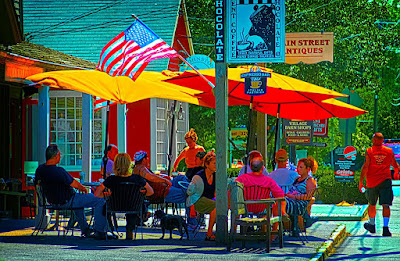We did some long days while on vacation looking for some reasonable images. On the way back to Connecticut we thought we’d relax at a couple spots we’d wanted to visit for quite a long time. One of the stops was at the Intercontinental Harbor Court on the Inner Harbor in Baltimore Maryland. Nice hotel, with a view across the harbor just about as you see it in today’s image. It was an easy day of travel from Washington DC up the road just a few miles (less than sixty) along the back roads. We arrived at the hotel fairly late in the afternoon with just about enough time to settle into the room and go out to dinner. Naturally the cameras came along with us as we walked along the harbor to a waterfront restaurant. The Inner Harbor area was one of the first sites to be repurposed into the centerpiece of a city and a cultural center. Many cities, such as San Antonio with the River Walk and New York’s South Street Seaport are examples of taking a look at the success of the Inner Harbor and saying “me too”. After dinner we walked around the plazas and shot some general interest shots. We watched the street performers and talked to people who saw our cameras and wanted to know more about what we were shooting with and what recommendation we might make for cameras. According to the write ups by Inner Harbor – Baltimore.org, the harbor is one of the most photographed areas of the city. It had the “typical” history of use, disrepair and rebirth that’s been seen in many similar attractions across the country. Today’s image looks pretty straight, but there are a couple of wrinkles that make it worth talking about. To learn more about the tweaks on today’s image, hit the “read more”.
Read more!
Heading to Belfast!
10 months ago














